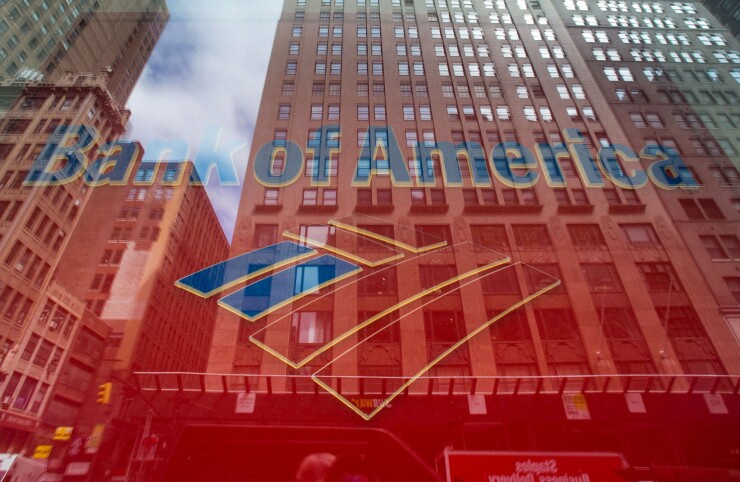In the midst of spending billions on technology upgrades, Bank of America has once again tinkered with its robo-to-human balance, this time retrofitting its digital wealth management offering with flesh-and-blood advisors.
It’s “a core part of how we are tackling the market,” Merrill Lynch Wealth Management President Andy Sieg said at a finance conference today, referring to the bank’s latest addition, announced last week, to its spectrum of wealth management services: a digital advisor that comes with financial solutions advisors.
The hybrid offering is the latest example of wealth management firms mixing and matching human and digital advice in search of solutions that will appeal to the broadest range of clients, says Alois Pirker, research director at Aite Group.
“You get the building blocks in place and you start blending and see what works,” Pirker says. “I think you could see [clients] changing how they want to interact with the firm depending on what life stage they’re in.”
Bank of America’s mix-and-match strategy has resulted in wealth management platforms that now run the gamut from self-directed (Merrill Edge) to robo (Merrill Edge Guided Investing) to traditional full service (Merrill Lynch Wealth Management).
The bank's wealth management business oversaw more than $2.8 trillion in client balances at the end of the first quarter, according to company data.
“In that whole continuum, there was one piece our clients pointed to that was missing: The mass affluent client who enjoys technology, who leverages digital, but who wanted some guidance and advice in terms of holistic financial planning,” says Aron Levine, head of consumer banking and investments for Bank of America. “This allows clients to leverage that platform but still access a financial advisor.”

Clients using the new digital-plus-advisor service have access to 25 of the company’s chief investment office portfolios, compared to 15 strategies available through Merrill Edge Guided Investing. The new offering has a $20,000 account minimum and charges an annual fee of 0.85%, compared to a $5,000 minimum and an annual fee of 0.45% for the purely digital version.
Discounts are available for members of Bank of America’s preferred rewards program.
“The whole idea is that clients identify a goal, a time horizon and their risk profile. From there, the digital platform says, ‘here are the portfolios that reflect your choices.’ And you can fund the account and talk to an advisor if you want to talk about other things,” Levine says, “[like] how does it affect saving for a home or getting a mortgage?”
The financial solutions advisors who serve clients on this platform are not quite akin to traditional Merrill Lynch financial advisors: They are not paid on a grid but are salary-plus-bonus, according to Levine. Some, but not all are CFPs. “They are fully integrated into the consumer model, but they are partnered with Merrill Lynch FAs, so they refer clients to those FAs when it's appropriate,” Levine explains.
-
The firm is benefiting some referrals from Bank of America’s other business units.
April 16 -
President Andy Sieg sees room to add to the firm’s ranks in novel ways.
April 11 -
“The thundering herd is on the move,” boasts Andy Sieg, head of Merrill Lynch.
January 16
The company has been finding synergy between its traditional wealth management business and its digital and self-directed offerings, according to Levine. Last year, there were more than 100,000 referrals between the business units representing “billions of dollars of assets,” he says.
At the finance conference, Sieg also emphasized the importance of fluidity between models.
“When we think about these offerings, there are no hard lines that are drawn here. We have clients with $250,000 to $500,000 in assets in our Edge business,” he said, adding that clients aren’t forced to migrate from one offering to another, but are made aware of other options as appropriate.
Earlier this year, the bank signaled it would add 300 financial solutions advisors to its traditional Merrill Lynch offices in order to increase connectivity between the different offerings.
But even with the human additions, digital investments will likely keep pace. In his speech, Sieg underlined how the bank’s $3 billion annual technology investment benefits advisors and clients alike. He pointed to how much more quickly Merrill Lynch advisors can now put together presentations for client meetings.
“Saving 30 minutes a day on every client review you do makes a big deal in our business,” he said.





